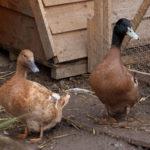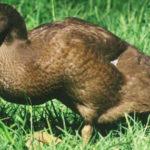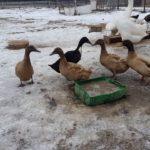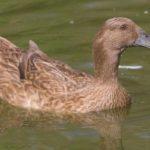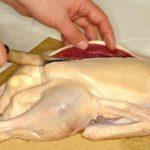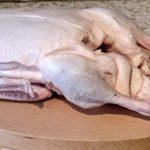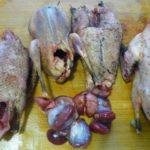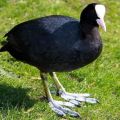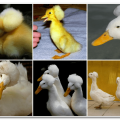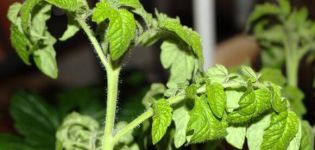Description and characteristics of Khaki Campbell ducks, breeding rules
The breed, bred at the beginning of the 19th century, is still popular, appreciated for good productivity, non-capriciousness in maintenance and nutrition. The khaki duck is kept for the sake of obtaining eggs and dietary meat that contains little fat. Birds raised for slaughter are considered to be medium-heavy, the slaughter weight reaches 3 kg. To obtain such carcasses, it is necessary to provide the livestock with room for walking, a high-calorie and balanced diet.
The history of the emergence of the breed
The khaki breed was created at the end of the 19th century by the English farmer Adele Campbell. The duck, originally bred not for exhibitions and sales, but for the sake of obtaining products for their own consumption, received a double name - khaki-campbell. The second word is the name of the hostess. The first reflects the unusual color of the feathers - brown with a greenish tint. This was the color of the English military uniform of those times.
Miss Campbell wanted to create a breed that was more productive in the meat and eggs direction. The farmer crossed a high egg production Indian runner with a Rouen meat duck. The resulting hybrid offspring were crossed with a mulard duck - a meat breed with good muscle mass with a minimum fat content.
The result was the appearance of birds with greenish-brown plumage. The hostess didn't really like the khaki color. She re-crossed the offspring with the Indian runner in order to obtain individuals with a different plumage color.
The appearance and characteristics of the khaki campbell duck
Today campbell drakes come in 4 colors:
- white;
- variegated;
- dark brown;
- khaki (greenish brown).

The color of females is dark or light sandy. Khaki drakes have a darker brown head than the rest of the body. The iris of the eyes is dark brown, the beak is light gray.
Description of the khaki breed is given in the table:
| Head | medium-sized, on a thin and long neck, stretched while running |
| Torso | elongated, strong, not massive, horizontally directed, narrow chest |
| Limbs | paws are not widely spaced, wings are undeveloped, not adapted for flight |
| Bird weight | drake - up to 3 kg, females - up to 2.5 kg |
| Egg production | 250-350 eggs per year |
| Egg weight | 70-80 g |
The khaki breed belongs to the meat-and-meat direction. Despite the average size, the duck is productive, since it has a thin skeleton, up to 90% of the slaughter mass is muscle tissue. Young individuals reach slaughter weight by 4 months of age, with good care they weigh up to 2.5 kg. The duck begins to fly from 6 months.
From an Indian runner, the khaki duck gained the ability to stand upright for a fast run.
The nature of the birds is determined by the quality of the content.When crowded, crowded, lack of food, the khaki duck shows aggression and anxiety. The spaciousness and abundance of food make the bird calm and conflict-free.
Pros and cons
Features of maintenance and care
According to poultry farmers, the khaki duck is not capricious in its content. Suitable for cultivation in both southern and northern regions. The main thing that needs to be done to make the birds feel comfortable is to build spacious open-air cages for walking, to make an artificial reservoir if there is no natural one near the dwelling.
Spacious walk
Campbell's duck cannot live in cramped conditions, withers away, becomes nervous. The optimal way of keeping livestock is pasture. The aviary is being built closed, but spacious. 1 m2 no more than 3 individuals should live. Moreover, the khaki duck gets along with other poultry without problems, provided there is sufficient space.
Slaked lime is used to disinfect the floor. Then lined with any of the following materials:
- sawdust;
- dried corn stalks;
- straw;
- sunflower husk.

The thickness of the litter should be 20-30 cm. The coating is changed every 2 weeks.
Pond
For birds, it is necessary to equip a reservoir. The pool and basin are not suitable options for the khaki breed. The pond should be spacious, allowing the duck to swim freely. It's good if the reservoir is natural. In it, the khaki duck not only wets feathers, but eats: it nibbles algae and coastal vegetation, catches small fish, mollusks, plankton.
Self-feeding of Campbell birds by 30% reduces the cost of feeding.
Feeding
To maintain the maximum egg and beef productivity of the Campbell breed, it is necessary to make the duck diet balanced and high in calories. It should include:
- fresh grass;
- boiled root vegetables (potatoes, carrots, Jerusalem artichoke, beets);
- vegetable tops;
- whole and crushed grains (oat, barley, wheat);
- broad beans;
- compound feed;
- milk whey;
- bone meal, fish and meat waste;
- sources of minerals (chalk, eggshells, shell rock).
The feed should be a moist homogeneous mash filled with whey or meat brew. Large pieces must be chopped to prevent choking.
Poultry house
The built house should be:
- well ventilated;
- spacious;
- protected from drafts;
- heated during the colder months;
- clean.
The duck dwelling is either connected to central heating, or they make a separate stove or boiler system that runs on wood, coal, and electricity.
Feeders
The Campbell duck eats casually, scattering food, so it is advisable to install a wide feeder. To put wet mash, metal containers are required (at least 15 cm in length per individual). And for dry food, wooden feeders are installed (from 6 cm per individual).
Drinking bowls
Water should be available around the clock. The drinker is placed near the trough, water is regularly topped up. An individual should have at least 2 cm of the length of the drinking container.
Nests
Nests are made as many as individuals rush.The floor is insulated, using a bedding of hay or sawdust. There should be partitions between the nests so that the duck does not accidentally crush the neighbor's eggs. It is advisable to equip the nest cell with an opening lid so that the flying khaki duck feels calm.
Poultry breeding rules
The khaki duck becomes fully mature at 6 months of age. Due to the underdevelopment of the maternal instinct, the mother turns out to be bad from her. The duck rarely sits in the nest for the allotted time. Therefore, you cannot do without using an incubator.

The eggs laid by the khaki duck stay in the incubator for 28 days. Eggs are taken for growing:
- taken out a maximum of 5 days ago;
- stored before incubation at about 12 ° C;
- standard size;
- no dents, cracks, dirty spots.
The eggs are disinfected with a manganese solution. During incubation, the following temperature conditions are observed:
- 1st week - temperature 38.1-38.3 ° C, humidity 70%;
- 2nd week - 37.8 ° C, 60%;
- 15-25 days - the indicators are similar, the eggs are opened daily for 10 minutes;
- from the 26th day until hatching - temperature 37.5 ° C, humidity 90%.
In the first 3 stages, the eggs are turned over 3 times a day so that they warm up evenly.
The room in which the khaki ducklings are kept should be warm and well lit. In the first week, lighting should be around the clock, then the length of daylight hours is gradually reduced. For 3 week old chicks, 9 hours of light is sufficient.
The temperature regime for khaki ducklings should be as follows:
- the first 5 days - 30 ° C;
- 6-10th day - 26 ° C;
- 11-15th - 24 ° C;
- 16-21st - 22 ° C.
Newborn khaki ducklings are fed with boiled egg. Further, the diet includes cottage cheese, fresh grass, corn and millet porridge.
Frequent illnesses
With proper care, the khaki duck does not tend to get sick, has a strong immune system. In unfavorable conditions, it is possible for the livestock to be affected by infectious and non-infectious pathologies, of which the most common are:
- Oviduct prolapse in juveniles. The problem arises from the formation of irregularly shaped eggs, which is associated with inadequate care and feeding.
- Cloacite is an inflammation of the mucous membranes and the lower part of the intestinal tract due to a lack of vitamins.
- Avitaminosis is a serious vitamin deficiency in which the duck lags behind in growth and development.
- Helminthiasis due to non-compliance with cleanliness in the poultry house or the use of poor-quality feed.
- Pasteurellosis, hepatitis are infectious diseases that are fatal to birds, arising from the use of low-quality feed.
To prevent these diseases, it is necessary to provide the birds with high-quality, balanced nutrition, regularly change the water in the drinker and clean the poultry house. Crowded content of birds and temperature extremes should not be allowed.

